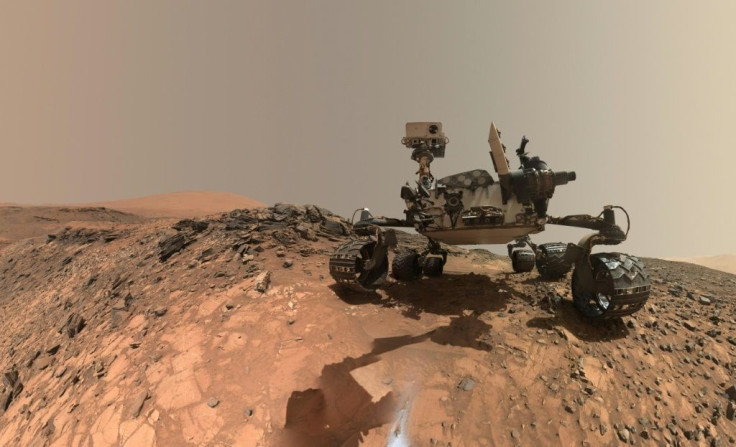NASA’s Curiosity Uncovers Mars’ Ancient Cold Environment Through Rock Samples

KEY POINTS
- NASA's Curiosity rover analyzed rock samples from Gale Crater
- The rock samples may have formed during a cold period on Mars
- Scientists believe the environmental conditions on Mars transitioned
NASA’s Curiosity rover came across minerals in rock samples that formed in an ice-covered lake. According to the scientists that carried out the study, the minerals may have formed during an ancient period on Mars when the planet was cold.
The study was conducted through a multi-year experiment carried out by Curiosity using its Sample Analysis at Mars (SAM) laboratory, which is located inside the rover’s belly. The findings of the experiment were presented in a paper published in Nature Astronomy.
The samples analyzed by Curiosity came from Gale Crater, which is the rover landing site selected by NASA. This particular region was chosen after it was discovered that it might have held bodies of liquid water. Previous studies have revealed that the region is rich in clay minerals, which could contain traces of ancient organic molecules.
Through the SAM chemistry laboratory, Curiosity was able to collect and analyze samples taken from various parts of the crater. These samples were then heated inside the laboratory in order to reveal their minerals and other elements. After several years of collecting and studying samples, a team of scientists working with Curiosity discovered that some of the minerals from the samples showed traces of Mars’ past environmental conditions.
According to the scientists, the rock samples containing the mineral may have formed during the time when Mars was cold since they contained traces of an ice-covered lake.
Since the composition of these rock samples is very different from that of the other rocks on Mars, the scientists believe that they may have formed during an ancient period that saw that drastic transition in Mars’ atmospheric conditions.
The scientists believe that this period may have occurred between two warm stages. It is also possible that it occurred after Mars’ atmosphere got stripped, causing the planet to become permanently cold.
“At some point, Mars’ surface environment must have experienced a transition from being warm and humid to being cold and dry, as it is now, but exactly when and how that occurred is still a mystery,” NASA geochemist Heather Franz explained in a statement.
© Copyright IBTimes 2025. All rights reserved.





















